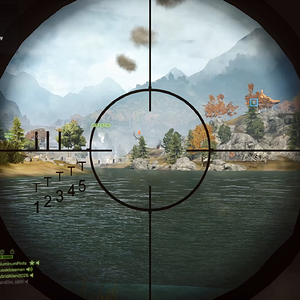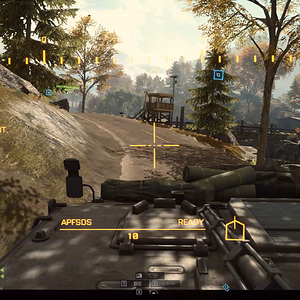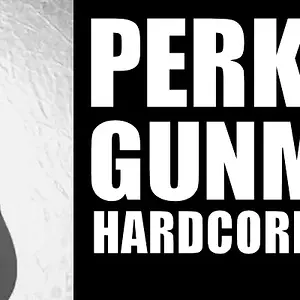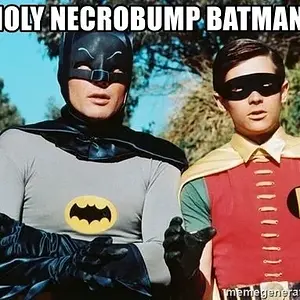Roger Ebert
Registered

There's such a rich pleasure in diving deep into the work of one filmmaker: you watch them perfect their craft while seeing which themes and motifs anchor their body of work through time. Such was the case as previewed the 27 films included in the upcoming Hiroshi Shimizu retrospective -- the largest ever in North America -- presented by the Museum of Moving Image and the Japan Society in New York City. While I had seen the four films included in the Criterion Collection's excellent boxed set Eclipse Series 15: Travels with Hiroshi Shimizu, I was largely unfamiliar with the contemplative Japanese filmmaker. I was not prepared for the immense cinematic pleasures and treasures that I was to discover.
Born the same year as Yasujirō Ozu, the prolific Shimizu forged a similar path as his much more well-known counterpoint. Both filmmakers cut their teeth in the silent era, worked at Shochiku studios, and even shared cast members like child actor Tomio Aoki. A cinematic poet at heart, Shimizu was also a workhouse, making over 160 films between 1924 and 1959, many of which remain lost. Watching my way through this retrospective, I marveled at Shimizu's technical prowess (you will never look at a later tracking shot the same way again), I was left breathless by the deeply felt humanity and compassion that flows through all of his works.
Although the retrospective will be shown in two parts -- Part I: The Shochiku Years at MoMi and Part II: The Postwar and Independent Years at Japan Society -- major themes run throughout his filmography. Shimizu was known for telling the stories of outsiders, be it migrant workers, war veterans, and orphans, persons with disabilities, itinerant drifters, or fallen women. Shimizu chose to examine the country as a whole through the lens of marginalized persons. His films explore the rift between traditional and modern Japanese culture and often take place in rural settings, with the director filming many of his films on location in the snowy Japanese Alps and the picturesque Izu peninsula.

Some of his best-known films take place in these mountainous regions, like the road movie "Mr. Thank You," my favorite of his films I had already seen, which follows a ragtag group of bus passengers over a rocky mountain pass to a train station that links the Izu peninsula to Tokyo. The titular Mr. Thank You (a wonderful Ken Uehara) uses his job to connect the rural population on his route to the outside world, delivering messages, buying pop records, and spreading a sense of ease rooted in kindness across the land. However, the film has a current of melancholy, as passengers discuss how the Great Depression has ravaged the region. Money is tight for everyone, including the mother of a young girl who is being sold off, it's implied, to work in a brothel in Tokyo. Along with its strong ensemble cast, Shimizu's breathtaking use of the mountain road landscape and his creative dissolves rank this film among the director's very best.
Shimizu returned to this same milieu in one of his postwar films, "Tomorrow There Will Be Fine Weather." Thought lost for over 70 years, the film was re-discovered just two years ago. Where "Mr. Thank You" took the angst of the Depression and found the sunny side, "Tomorrow There Will Be Fine Weather" examines the scars left behind by World War II. The bus driver in this later film is no longer jovial; he's just doing his job and having a hard time at that. After the bus breaks down, a blind masseur and a legless veteran contend with the selfishness of a greedy mustachioed businessman and nearly come to blows with an Army commander who "shamelessly" survived the war after leading his men to grisly deaths. A war orphan cries for her lost family, and a fallen woman contemplates whether she has a future in this new fractured society.
Like his two bus pictures, throughout the retrospective, you'll find that there is a connected Shimizu-verse, with characters and places weaving in and out of films or narratives that reflect different angles on the same subject. This is seen in his spa films, which are also filmed in the Izu peninsula. In "The Masseurs and a Woman," two blind masseuses (Shin Tokudaiji and Shinichi Himori) travel to a country spa and find their lives slowly intertwined with everyday dilemmas of a variety of people, including a mysterious woman (Mieko Takamine) from Tokyo running from a secret past. Made during the Second Sino-Japanese War, "Ornamental Hairpin" stars the great actress Kinuyo Tanaka, a great underseen director in her own right, as a woman seeking peace from a sordid past who falls for a convalescing soldier (Chishū Ryū), and finds a sense a family, even if just for a brief time, with him and the spa’s other colorful guests.
Starting as early as his silent-era films like "Japanese Girls at the Harbor," the director took an uncritical look at women who, for whatever reason, must make ends meet as sex workers, bar hostesses, or kept women. "A Woman Crying in Spring," Shimizu's first "talkie," blends that theme with his interest in the working classes, migrants, and one of his most prominent fascinations: the struggles and sacrifices mothers make for their children. Set in the snow-capped northern island of Hokkaido, this melodrama centers on the love affair between a migrant miner (Den Obinata) and an itinerant single mother working as a bar hostess (Yoshiko Okada), whose brief love affair is threatened by the deadly mismanagement of the mine.
Along with his many films about makeshift communities, the filmmaker often zoomed in on the trials and tribulations of blended families and single mothers. In "A Hero of Tokyo," frequent collaborator Mitsuko Yoshikawa gives a heartbreaking performance as a mother who opens a hostess bar to support her son and stepson after her new husband abandons them. Featuring perhaps the bleakest ending in the whole retrospective, "Forget Love for Now" centers on a young boy (Michiko Kuwano) who struggles to accept his mother's profession as a bar hostess, which leads him to pick fights with other boys to defend her honor. The film acts as a searing critique of how society's dangerous moralizing towards women who work in these professions trickles down to the behavior of the country's children in the worst possible way.

Mothers figure prominently in Shimizu's postwar films as well. In "A Mother's Love," a poor single mother (Nijiko Kiyokawa) takes her three children from Tokyo to the country, hoping to offload them on relatives so she can remarry. Yet, as she journeys through the Izu Peninsula, itself fractured and frail after the war, and meets with families making do with very little, she begins to feel a renewed sense of just how much a mother's love is worth to a child. His final film, "Image of a Mother" centers on Michio (Michihiro Môri), a young boy struggling with his widowed father's new marriage to the gentle widow Sonoko (Chikage Awashima).
Although he respects the woman and has no problem calling her daughter Emiko (Sachiyo Yasumoto) his sister, he cannot call her "mother" for fear of disrespecting the memory of his dead mom. Shimizu expertly illustrates the inner turmoil of both step-parent and child through subtle emotional shifts and stark violence, culminating in an indelible final image that perfectly encapsulates a career dedicated to showcasing the power of love.
For me, this film illustrated the greatest revelation of this retrospective: that Shimizu is truly one of the great directors of children. The children in Shimizu's films are jubilant, bratty, strange, and complex little weirdos who move through the world with just as much full-fledged humanity as his grown-up characters. The director once said I liked working with child actors because "They are natural. They breathe the air. Films must have humans who breathe the air."
While children factor into many of the director's works, two sets of films from each movement in his career stand out. From his time at Shochiku are the films "Children in the Wind," "Four Seasons of Children: Spring/Summer," and "Four Seasons of Children: Autumn/Winter," which relay two years in the life of brothers Zenta (Masao Hayama) and Sanpei (Bakudan-kozo). Similar to Ozu's great films about brothers ("I Was Born But. . ." and "Good Morning"), Shimizu creates a whole world around Zenta and Sanpei, their joys and struggles with the neighborhood kids, the shift in adulation to actual understanding of their parents as flawed individuals, and of course their unshakable bond with each other. Shot once again in the country, Shimizu tempers the emotional realism of these films with a shimmering, golden light that captures the idyllic lens with which most of us would like to remember our childhoods.

From his postwar period, nothing can compare to the sheer emotional triumph of his orphan trilogy. His first film after departing from Shochiku, Shimizu self-produced "Children of the Beehive," featuring a cast of children raised at the orphanage he founded. This ragtag group of boys finds a sense of family together and with a nameless soldier who helps the group find work as he takes them on a cross-country journey towards his old school Introspection Tower (itself featured in an earlier film by Shimizu of the same name). One boy cries for his mom every time he sees the sea, which is where she lost her life, and you will absolutely be crying, too. The docudrama "Children of the Beehive: What Happened Next” takes a meta-narrative approach to the story of the orphaned actors featured in the previous film, re-writing and updating their fictional and real-life stories with a thorough dose of optimism.
Finally, in "Children of the Great Buddha," Ko (Sadao Nakamura) and Genji (Yoshio Kinuta), a pair of war orphans eke out a living through their knowledge of Japan's cultural history, working as guides for tourists visiting the statues and temples of Japan’s ancient capital of Nara. Once again, Shimizu explores the plight of war orphans with empathy, the strength that can be found in makeshift families, and the transformative power of loving and being loved.
Presented in rare 35mm prints from archives and collections around the world, Hiroshi Shimizu Part I: The Shochiku Years screens at the Museum of Moving Image from May 4 — May 19, 2024, and Hiroshi Shimizu Part II: The Postwar and Independent Years screens at the Japan Society from May 16—June 1. For those who cannot make it to New York City, smaller Shimizu retrospectives will take place this summer at the Cinematheque in Vancouver, BC in Canada and the Pacific Film Archive in Berkeley, California.
Continue reading...







